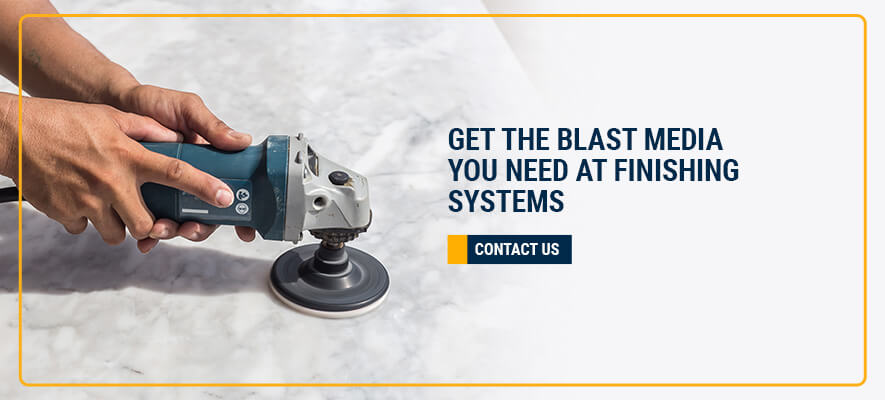Whether you're stripping, cleaning, or polishing, blasting media plays a critical role in achieving a sleek and professional finish. Among the most commonly used abrasives are aluminum oxide and silicon carbide. Both materials are versatile and cost-effective, but their unique properties make them suitable for different applications. Understanding their differences can help you choose the right abrasive for your needs. Aluminum oxide is widely regarded as the go-to choice for stripping painted surfaces, working with wood, and handling various types of metal. It's not only affordable but also long-lasting, keeping production costs down while maintaining efficiency. Aluminum oxide is available in three distinct colors—pink, white, and brown—each suited to specific tasks. White and pink aluminum oxides produce smoother finishes compared to the standard brown variety. White aluminum oxide excels in applications involving wood and lacquer due to its minimal heat generation and superior performance in precise operations. Pink aluminum oxide works best on softer woods and is ideal for sharpening or grinding tasks. However, these colors tend to wear out faster than brown aluminum oxide, reducing their overall durability. Brown aluminum oxide stands out for its effectiveness on hard materials such as steel. Known for its affordability and extended wear life, brown aluminum oxide features grains that break down more slowly over time. Its self-sharpening property, referred to as semifriable grain, ensures that coarser grains remove larger burrs while leaving finer grains behind for a refined finish. Additionally, brown aluminum oxide is highly recyclable, allowing it to endure multiple blast cycles before needing replacement. This makes it the most economical abrasive option. Silicon carbide is renowned for its extreme hardness and sharpness, making it perfect for working with ceramics, glass, stone, marble, fiberglass, and many plastics. Its narrow, pointed edges allow it to perform well in shorter blast cycles on softer materials. Silicon carbide is excellent for etching surfaces and preparing them for finishing coatings. However, its hardness can lead to faster wear when used on tougher materials like wood or steel. One of the standout advantages of silicon carbide is its versatility. It can be used in both direct-pressure and suction-based systems. Furthermore, silicon carbide can be paired with aluminum oxide in finishing operations—aluminum oxide for general residue removal and silicon carbide for polishing. This approach minimizes wear on the less durable silicon carbide abrasives while delivering smooth results, whether in individual finishing or blast tumbling. Silicon carbide is also safe to use in wet or volatile environments, producing no static electricity that could cause ignition and having minimal magnetism. When it comes to grinding steel, aluminum oxide is the superior choice. Although silicon carbide is sharper and harder than aluminum oxide, it is also more brittle. Using silicon carbide on steel would likely require multiple rounds of the abrasive to achieve any noticeable effect due to its rapid wear. Aluminum oxide, on the other hand, is highly durable. Brown aluminum oxide is particularly effective for creating a moderately smooth steel finish, while pink aluminum oxide can be used afterward to refine the surface further. Aluminum, being a soft metal, benefits from a blend of aluminum oxide and silicon carbide. To ensure an even finish, you need a hard abrasive, but minimizing heat generation is equally important. Silicon carbide is ideal for low-tensile strength metals like aluminum, though its suitability depends on your specific application. Starting the grinding process with aluminum oxide and refining it with silicon carbide is a common approach. White aluminum oxide is an excellent option for aluminum surfaces because it provides precision without excessive heat generation. The decision between aluminum oxide and silicon carbide ultimately depends on your project requirements. If you're working with non-metallic or low-tensile strength materials, silicon carbide is the way to go. Aluminum oxide is preferable for high-tensile strength materials such as steel, bronze, and aluminum alloys. Combining both abrasives is recommended for precision finishing tasks. This strategy applies not only to aluminum grinding but also to woodworking applications. The experts at Finishing Systems are here to help you select the right abrasives for your projects. We offer a wide range of aluminum oxide and silicon carbide options, including friable, semi-friable, and standard varieties, ensuring maximum versatility. Contact us today to learn how we can support your stripping and finishing goals.
Full threaded steel self drilling rock bolt / Hollow anchor bar / Anchor rods
The Self Drilling Anchor system is comprised of a hollow threaded anchor bar with a sacrificial drill bit that performs drilling, anchoring and grouting in a single operation. Widely used as an efficient anchoring means, in tunnel pre-support, slope, coast, mine, water conservancy projects, building foundation, roadbed reinforcement and geological diseases treatment such as landslip, crack, sink age. It`s irreplaceable in narrow construction environment. Hollow anchor bar is made of seamless tube with high strength.
Advantages and Characteristics as below:
1. No casings required, because anchor bars can be drilled into loose soils without needing casings to support the boreholes.
2. Fast drilling and installation, because drilling, installation and grouting are in a single operation.
3. Both rope threads and trapezoid threads are robust and ideal for rotary-percussive drilling and ensuring a high level of bondwith the borehole gout.
4. The hollow core not only serves for flushing during drilling, but also for grouting after drilling.
5. Continuous threads ensure the bars can be cut and coupled at any point, or extended.
6. Different anchor bits are available for different ground conditions.
Hollow Anchor Rod,Grouting Anchor Rod,Hollow Anchor Bar,Hollow Anchor Bolt Shandong Guanzhou Iron and Steel Group Co., Ltd. , https://www.guanzhousteel.com
Aluminum Oxide vs. Silicon Carbide
Last Updated: November 24, 2023
Aluminum Oxide Abrasives
Pink and White
Brown
Silicon Carbide Abrasives
Which is Better for Grinding Steel?
Which is Better for Grinding Aluminum?
Choosing Between Silicon Carbide and Aluminum Oxide

Get the Blast Media You Need at Finishing Systems